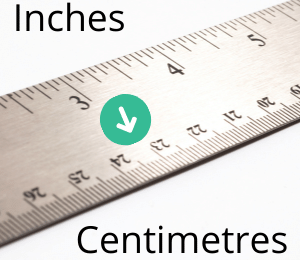Have you ever wondered how fast Gravity propagates through space? The speed of light is a fundamental constant of the universe. It is well-known, but what about the speed at which Gravity travels? In this blog post, we will explore the fascinating concept of the speed of Gravity and delve into the latest scientific discoveries. That shed light on this fascinating phenomenon.
Understanding Gravity
Gravity, as described by Albert Einstein’s theory of general relativity. It is the force that governs the interaction of massive objects. It is responsible for the motion of celestial bodies, galaxies’ structure, and our planet’s dynamics. However, the speed at which Gravity spreads its influence has been a topic of intense investigation and debate for a long time.
Newton’s Law and Instantaneous Gravity
Before delving into Gravity’s speed, understanding the classical perspective is essential. Sir Isaac Newton’s law of universal gravitation. It is formulated in the 17th century and described Gravity as an instantaneous force. According to Newton, any change in the position or mass of an object would instantaneously affect the gravitational force. Experienced by other things in the universe. This idea of instantaneous action at a distance prevailed for centuries. Until Einstein’s revolutionary theory challenged it.
Einstein’s Theory of General Relativity
In the early 20th century, Einstein introduced his theory of general relativity, which presented a new understanding of Gravity. According to general relativity, Gravity is not an instantaneous force but rather a curvature of spacetime caused by the presence of mass and energy. Massive objects, such as stars or planets, create a “dent” in the fabric of spacetime, and other things move along the curved paths dictated by this geometry.
The Speed of Gravity
The question of how fast Gravity travels became a significant interest after Einstein’s theory. In 2002, a groundbreaking experiment conducted by physicist Sergei Kopeikin and his team confirmed that Gravity travels at the speed of light. This conclusion aligned with the predictions of general relativity and added a new layer of understanding to the nature of Gravity.
Gravity Waves and Their Detection
One of the most remarkable confirmations of the speed of Gravity comes from the detection of gravitational waves. These ripples in spacetime, are caused by the acceleration of massive objects. Also, they were first directly observed in 2015 by the Laser Interferometer Gravitational-Wave Observatory (LIGO). The observed time delay between the arrival of gravitational waves and electromagnetic waves from the same event confirmed that gravity waves travel at the speed of light.
Implications and Significance
The realization that Gravity travels at the speed of light has profound implications for our understanding of the universe. It means that changes in the gravitational field caused by the movement of celestial bodies take time to propagate across space. Consequently, our perception of the positions and motions of astronomical objects may be partially current but slightly delayed.
How to calculate it?
Calculating Gravity’s speed involves understanding general relativity principles and considering Gravity’s effects on massive objects. However, it’s important to note that the rate of Gravity is equal to the speed of light in a vacuum, as confirmed by experimental evidence. Therefore, we don’t need to calculate it separately, but we can explore the concept further with the help of a couple of examples:
Example 1:
Earth’s Gravity Let’s consider a scenario where the Sun suddenly disappears from the solar system. According to the speed of Gravity is equal to the speed of light, it would take approximately 8 minutes and 20 seconds for the Earth to be affected by the absence of the Sun’s gravitational pull. This delay occurs because the light from the Sun takes that amount of time to travel the 93 million miles (150 million kilometers) to Earth, and Gravity travels at the same speed.
Example 2:
Binary Star System Imagine a binary star system where two stars orbit each other. The gravitational influence of one star affects the other, resulting in their orbital motion. However, due to the finite speed of Gravity, there is a delay in the effect of the gravitational force between the stars. The delay would depend on the distance between them. For instance, if the stars were located 100 light-years apart, the gravitational influence of one star on the other would take 100 years to propagate through space.
These examples demonstrate how Gravity’s speed, equivalent to light’s speed, introduces a delay in transmitting gravitational effects across space. The calculations involve considering the distance between objects and dividing it by the speed of light to determine the time it takes for the gravitational influence to travel.
It’s worth noting that the speed of Gravity can be indirectly calculated by studying the behavior of astronomical objects, analyzing the propagation of gravitational waves, or conducting experiments that measure the time delay between the arrival of gravitational and electromagnetic waves. These methods provide empirical evidence that supports the idea that Gravity travels at the speed of light.
In summary, while we don’t need to calculate the speed of Gravity separately because it matches the speed of light, we can explore the concept through examples that demonstrate the time delay in the propagation of gravitational effects between objects.
Conclusion
The speed of Gravity, once a subject of speculation and debate, has been unraveled through the elegant framework of general relativity and confirmed by experimental evidence. We now know that Gravity propagates at the speed of light, aligning with our broader understanding of the laws of the universe. This understanding deepens our appreciation for the intricate nature of Gravity and its role in shaping the cosmos.
FAQs
Q1: What is the speed of Gravity?
The speed of Gravity is the speed at which the gravitational influence of a massive object propagates through space. According to Einstein’s theory of general relativity, which has been supported by experimental evidence, the speed of Gravity is equal to the speed of light in a vacuum.
Q2: How does the speed of Gravity compare to the rate of light?
The speed is equal to the speed of light in a vacuum, which is approximately 299,792,458 meters per second (or about 186,282 miles per second). This means that changes in the gravitational field caused by the movement of massive objects, such as stars or planets, take time to propagate through space, just like light does.
Q3: Why is it important to understand the speed of Gravity?
Understanding speed is crucial because it affects our perception of the positions and motions of astronomical objects. Since Gravity takes time to travel, the information we receive about the gravitational interactions in the universe is not instantaneous but slightly delayed. This understanding deepens our knowledge of how celestial bodies influence each other and how the universe evolves.
Q4: How was the speed of Gravity determined?
The speed was determined through a combination of theoretical calculations based on Einstein’s theory of general relativity and experimental observations. Also, in particular, experiments involving the detection of gravitational waves.
Q5: Can the speed of Gravity vary in different conditions or mediums?
According to current scientific understanding, Gravity’s speed is considered a fundamental constant of the universe. It is expected to be the same in all conditions and mediums. Moreover, the rate of light, equivalent to Gravity’s, is believed to be constant regardless of the medium it travels through.
Q6: Does the speed of Gravity have any practical implications?
While the speed may not have direct practical implications in everyday life. It has significant implications for our understanding of the universe and how celestial objects interact. It plays a crucial role in astronomy, astrophysics, and cosmology. Hence, helping scientists model and predict heavenly bodies’ behavior and the cosmos’ evolution.
Q7: Is the speed of Gravity relevant to our daily experiences on Earth?
In our daily experiences on Earth. The speed doesn’t have a noticeable effect since the distances involved are relatively small. However, in extreme cases, such as astronomical events or the study of distant celestial objects. The time delay is caused by the speed. Becomes significant and needs to consider for accurate predictions and observations.
Q8: Has the speed of Gravity always been known?
No, the understanding of speed has evolved. In classical physics, Gravity is considered an instantaneous force. As described by Sir Isaac Newton’s law of universal gravitation. However, with the advent of Einstein’s theory of general relativity in the early 20th century. Our understanding shifted, and it was realized that Gravity propagates at the speed of light. Additionally, experimental evidence and advancements in technology have since supported this understanding.





